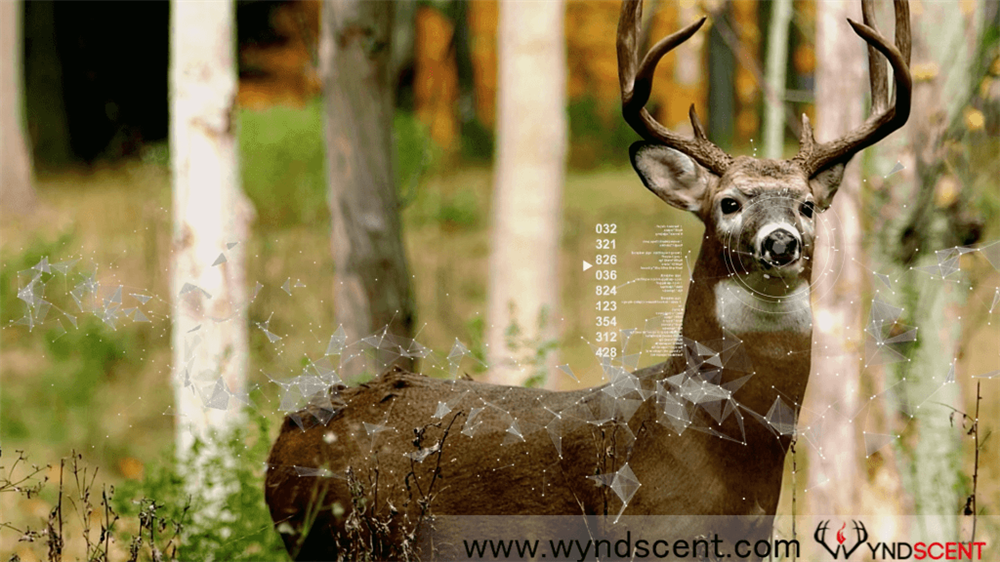
The Power of Vaporized Hunting Scents
A new style of using scents for hunting has emerged, and the science suggests that it might be more effective than anything hunters have used in the past. In the past, debates on hunting scent, be-it cover scent, food, urine or estrous scent, have focused on the source of the scent and its base… oil or water. However, not as much discussion has focused on the all-important aspect of how the scent gets from the source to an animal’s nose. Using energy to vaporize a scent, instead of simply dragging it on the ground or hanging a wick from a branch, can not only help scent travel farther, but also be effective in a wider range of conditions. What is vaporizing, exactly? We’ll dig in a little deeper, but for now, imagine someone using an e-cigarette. As they inhale, the liquid inside the chamber heats up to create a vapor, which you can visibly see as the person exhales. The same idea is true here, but with hunting scent instead of nicotine in the liquid. Let’s briefly dive into the science of vaporizing scents and then discuss whether or not they could have actual benefit in real-world scenarios.
How Animals Smell
Let’s start with the basics. Certain types of molecules, scent molecules, have very specific shapes and structures. All molecules that make up a substance (liquid or solid in our case) are rapidly vibrating. This happens on a scale much too small for us to see. If those vibrating molecules have just enough energy, they’ll break free of the substance and begin floating freely in the air. This is called vaporization. When the vaporized scent molecules enter the nose of an animal, special receptors are activated and send signals to the brain. Those signals are interpreted as smell. The concentration of scent molecules is also important. Animals such as deer, bear, and dogs have hypersensitive noses that are capable of sensing smell with much lower concentrations of scent molecules than humans. The key thing is that the scent molecules need to be in vapor form in order to travel by wind and air currents from the source to the nose, or they’ll never be smelled.
What is Vaporization, and Why is It Important?
How do the scent molecules become vaporized? Well, there are two primary ways that something can be vaporized, evaporation and boiling. Evaporation happens from the surface of a liquid. Small amounts of internal energy will cause some molecules to escape the surface and become airborne. Scent molecules are no exception. A puddle of water in the middle of a road will eventually dry up after the sun comes out because of evaporation. It happens slowly. Boiling, on the other hand, happens rapidly from the bulk of the material, and can turn a pot of water into vapor in a short matter of time. The temperature required to do this often means the addition of external energy. For the pot of water, that energy comes from the flame of the stove. With an electronic vaporizer, the energy comes from a battery powered electronic circuit that heats the liquid. Both evaporation and vaporization achieve the same result but in different ways. It’s easier to control boiling because we can simply add heat. Evaporation will speed up or slow down depending on environmental factors such as the humidity and the temperature. It will happen quickly in warm, dry conditions, and slower in cold, wet conditions. That can have a large impact on the effectiveness of hunting scents that rely on evaporation in the real world.
Electronic Vaporization Has Real-World Benefits
Have scent drags and wicks worked for you? Have they worked for your buddies? If you’re like most, the answer is “sometimes yes, but sometimes no.” Remember, if conditions aren’t favorable for evaporation, less of that scent will become airborne. Most of it will stay put within the gel or scent wick where they do you no good. Once again, we want scent to get in the air. But wait? How can a deer smell your entry route? How can a bloodhound follow somebody’s scent on a sidewalk? Don’t the animals smell scent on the ground in those instances? Well, the source of the scent is on the ground, but it still evaporates just enough that animals with a very sensitive nose can pick it up. So how can electronic vaporization help, specifically? By using energy to heat up a liquid scent, we can force it to become a gas and become airborne much more rapidly and reliably than we could through evaporation. Have you ever noticed that hot food smells more than cold food? Well, physics has a reason for that. In wet or humid conditions, electronic vaporization beats evaporation. In cold conditions, electronic vaporization beats evaporation. Considering that the whitetail rut often occurs in a period of cooler temperatures in the upper MidWest, it makes sense to give your scent a little “boost” in getting airborne.
Additional Benefits of Electronic Vaporization
Electronic vaporization has another advantage over using liquid, gel, or solid scents in the traditional manner. You can set specific intervals at which scent is released. If scent is simply placed on the ground, it will slowly evaporate until gone. That entire process could take days. We all know that deer and tracking dogs have the ability to pick up a weak ground scent that’s days old. With vaporization, bursts of strong scent can be released from the moment you enter your spot until you leave, and then promptly shut off. That reduces the chance that an animal will investigate your scent overnight, only to also discover your human scent and avoid the area in the future.
Is scent vaporization the magic trick that will finally bring that big buck or bear into your setup? Well, nothing is guaranteed in hunting; however, science certainly gives a leg up to scent vaporization.
Garrett Prahl
DIY Sportsman
